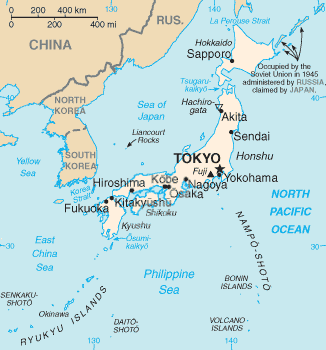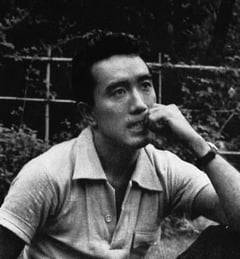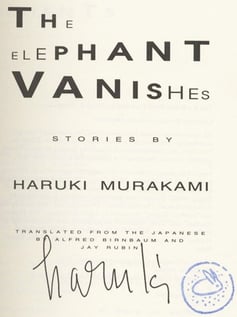Are you interested in reading more Japanese literature, or are you traveling to Kyoto or Tokyo soon? We have some book recommendations for you.
Yasunari Kawabata’s Snow Country (1956)
 We love many of the works of the Japanese Nobel Prize-winning writer Yasunari Kawabata, but Snow Country might be our favorite. A novel at once about love and the ephemerality of geographic space, this novel represents for us, in many ways, the best of Japanese fiction. We’ll let you decide for yourself with language from the beginning of the novel:
We love many of the works of the Japanese Nobel Prize-winning writer Yasunari Kawabata, but Snow Country might be our favorite. A novel at once about love and the ephemerality of geographic space, this novel represents for us, in many ways, the best of Japanese fiction. We’ll let you decide for yourself with language from the beginning of the novel:
“In the winter, cold winds blow down from Siberia, pick up moisture over the Japan Sea, and drop it as snow when they strike the mountains of Japan . . . . The expression ‘snow country,’ then, does not mean simply country where snow falls . . . . It suggests long, gray winters, tunnels under the snow, dark houses with rafters black from the smoke of winter fires—and perhaps chillblains, or, to the more imaginative, life divorced from time through the long snowbound months.”
Yukio Mishima’s Temple of the Golden Pavilion (1956)
 Mishima is among the best-known Japanese novelists of the twentieth century. He wrote a number of works, but we’ve chosen Temple of the Golden Pavilion for our list on the best books from Japan. The novel was published in Japanese in 1956, followed by an English translation by Ivan Morris in 1959. Mishima’s novel is based in part on an event that occurred in Kyoto in 1950: a Buddhist acolyte burned down the Golden Pavilion of Kinkaku-ji, which was built before 1400 and survived multiple wars over more than six centuries. While the novel doesn’t follow the precise narrative surrounding the burning of the temple, it takes the tragic historic event as a jumping-off point. Visitors to Kyoto can see a reconstructed version of Kinkaku-ji today.
Mishima is among the best-known Japanese novelists of the twentieth century. He wrote a number of works, but we’ve chosen Temple of the Golden Pavilion for our list on the best books from Japan. The novel was published in Japanese in 1956, followed by an English translation by Ivan Morris in 1959. Mishima’s novel is based in part on an event that occurred in Kyoto in 1950: a Buddhist acolyte burned down the Golden Pavilion of Kinkaku-ji, which was built before 1400 and survived multiple wars over more than six centuries. While the novel doesn’t follow the precise narrative surrounding the burning of the temple, it takes the tragic historic event as a jumping-off point. Visitors to Kyoto can see a reconstructed version of Kinkaku-ji today.
Kenzaburō Ōe’s A Personal Matter (1964)
In 1994, Kenzaburō Ōe won the Nobel Prize in Literature, and the committee described him as a writer “who with poetic force creates an imagined world, where life and myth condense to form a disconcerting picture of the human predicament today.” We have chosen his A Personal Matter for our list since it is among the earlier works that brought the writer to international prominence, and it is also semi-autobiographical. This book was translated into English the same year as its Japanese publication by John Nathan. The novel follows the 27-year-old protagonist Bird, whose son suffers from a brain hernia.
Kōbō Abe’s The Woman in the Dunes (1964)
Japanese existentialist writer Kōbō Abe isn’t as well-known by American readers as other novelists who are his contemporaries, but we find his work incredibly compelling. His name is a pseudonym for Abe Kimifusa, and his fiction is often compared to that of other modernist writers such as Franz Kafka. If you are just now learning about his work, we recommend reading The Woman in the Dunes. Rather than attempt to tell you about the plot or narrative implications of this novel, we’d like to introduce you to it through Kōbō Abe’s language:
“One day in August a man disappeared. He had simply set out for the seashore on holiday, scarcely half a day away by train, and nothing more was ever heard of him. Investigation by the police and inquiries in the newspapers had both proved fruitless. Of course, missing persons are not really uncommon. According to the statistics, several hundred disappearances are reported every year . . . . But if the instance does not come under some such heading, clues—and this is especially true in the case of missing persons—are extremely difficult to come by. Many disappearances, for example, may be described as simple escape.”
Haruki Murakami’s The Wind-Up Bird Chronicle (1997)
 For many American readers, Haruki Murakami is the first foray into Japanese fiction. He is among the most prolific writers we know, with thirteen novels published (and another on the way), and numerous books of short stories and essays. By all accounts, The Wind-Up Birch Chronicle is the novel that introduced readers in the English-speaking world to Murakami’s imaginative fiction. It is set in Tokyo and is, on its face, about a man’s search for a lost cat. Yet it is so much more than that—it is also a detective story, a narrative of loss and the dilemmas of contemporary society, and the still-lingering wounds of the Japanese campaign in Manchuria around World War II.
For many American readers, Haruki Murakami is the first foray into Japanese fiction. He is among the most prolific writers we know, with thirteen novels published (and another on the way), and numerous books of short stories and essays. By all accounts, The Wind-Up Birch Chronicle is the novel that introduced readers in the English-speaking world to Murakami’s imaginative fiction. It is set in Tokyo and is, on its face, about a man’s search for a lost cat. Yet it is so much more than that—it is also a detective story, a narrative of loss and the dilemmas of contemporary society, and the still-lingering wounds of the Japanese campaign in Manchuria around World War II.
Interested in learning more about Japanese fiction from the twentieth century? Head to your local bookstore to pick up one of our recommendations!









